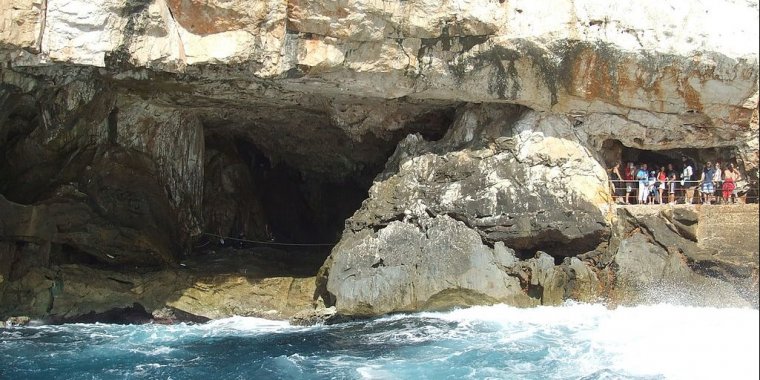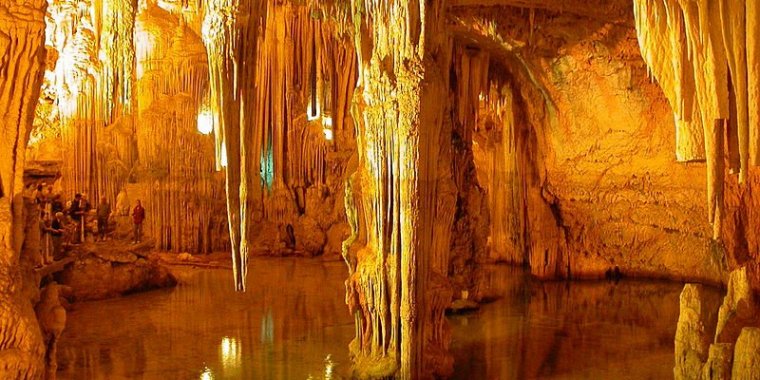| Travel / Tourist Attractions |
Neptune's Grotto (Grotta di Nettuno, Cova de Neptú), Sardinia, Italy
Neptune's Grotto is a stalactite cave near the town of Alghero on the island of Sardinia, Italy. The cave was discovered by local fishermen in the 18th century and has since developed into a popular tourist attraction. The grotto gets its name from the Roman god of the sea, Neptune.
The entrance to the grotto lies only around a metre above the sea level at the foot of the 110-metre-high Capo Caccia cliffs and the cave can therefore only be visited when the waters below are calm. A stairway cut into the cliff in 1954, the 654-step escala del cabirol (goat's steps), leads from a car park at the top of the cliff down to the entrance.
The grotto is also accessible via a short boat trip from the port of Alghero; these trips are arranged hourly during the summer, but less frequently during spring and autumn. Two other grottoes lie nearby, the "Green grotto", which is not open to tourists, and the Grotta di Ricami, which is only accessible from the sea.
Under water all around there are many big under water marine caves, paradise for the scuba-diving fans, the bigger and the most famous is the Nereo Cave, visited each year by thousands of scuba divers.
The combined length of the cave system is estimated to be around 4 kilometers, but only a few hundred metres are accessible to the public. Inside are passages of lit stalactite and stalagmite formations, and a 120-metre-long saltwater lake, which is at sea level. The cave was once a habitat for the Mediterranean monk seal, which has become extinct in the area.
Tourists visiting Neptune's Grotto are given guided tours and led single-file through a lit pathway, with tour guides providing information about the cave in Italian and English.
Source
• www.wikipedia.org
YOU MAY ALSO LIKE







